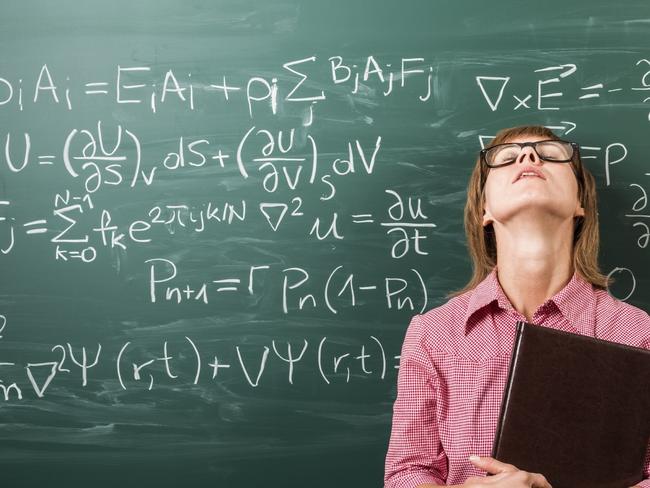Teaching methods to blame for poor maths results in Australian students
Inadquate teaching methods are the main reason for low maths results in Australian students, according to a damning new report, as nearly one in three Victorian students fail to meet national standards.
Education
Don't miss out on the headlines from Education. Followed categories will be added to My News.
Low maths results in Australian students are due in large part to inadequate teaching methods, not a lack of aptitude or effort by the learner, a new research report has found.
Dr Siobhan Merlo, a psychologist and learning intervention teacher with more than 30 years’ experience, is calling for more focus on the effectiveness of maths teachers.
In a Centre for Independent Studies paper, she argues schools should ensure the best teachers are in front of students and teach them in the most effective way.
It comes as nearly one in three Victorian students — about 300,000 pupils — fail to meet national standards in maths, according to NAPLAN results.

A recent report from the Victorian Auditor-General Office also found student reading and maths outcomes have been static for more than a decade.
This was despite an increase in education spending of 33 per cent in recent years, with average funding per student rising from $11,522 in 2015 to $21,478 in 2021.
Up to now, students have often been blamed for these poor results, with new OECD data revealing nearly half of all students who are online in class getting substantially lower grades in maths.
Dr Merlo’s research argues a key element of improving teacher effectiveness is aligning “instruction with scientifically based evidence of what is likely to be most successful for student outcomes”.
She said teachers needed to understand the learning limits of students.
“Learning suffers when students are distracted, anxious, overwhelmed, lack practice, find the material too unfamiliar, or don’t get timely and specific feedback,” she said.
“Gaining and sustaining student attention is critical, otherwise learning will not happen,” Dr Merlo, a University of Melbourne academic, said.
This includes removing distractions, taking steps to prevent student anxiety, managing working memory load effectively, and adapting instruction to the skill levels of students.
Her comments come as a lack of specialist teachers continues to impact outcomes in such subjects.

The 2021 Victorian Teacher Supply and Demand Report shows 27 per cent of maths high school teacher positions were not filled, with rates increasing in 2022.
Dr Merlo said it was important for teachers to understand “the characteristics of the learner’s cognitive ‘hardware’ and the learner’s cognitive ‘software’ — including the types of knowledge and skills being acquired”.
Jennifer Bowden, CEO of the Mathematical Association of Victoria (MAV), welcomed the research.
“I would love to ensure that all Victorian teachers know that there are support systems for them to build their capabilities and make informed decisions around practice and research that relates to their contexts,” she said.
“MAV will always back teachers and support them as they strive to continue to develop their professional practice.”



